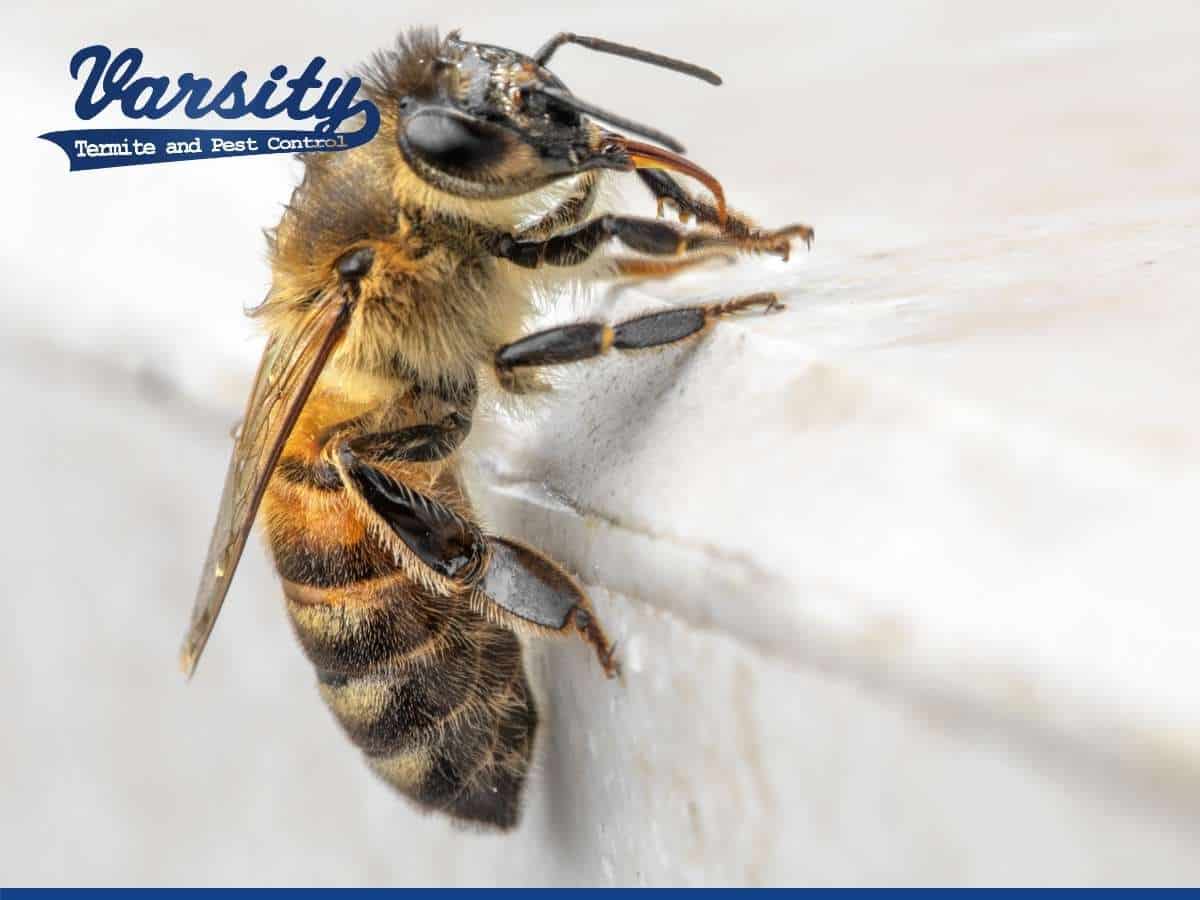Most people who live in warmer states such as Arizona or Nevada know about the threat of “killer bees,” which are more formally known as Africanized honeybees. Originally from South America, killer bees have spent decades slowly making their way northward into the warmer regions of the United States. Residents of these regions have become accustomed to the constant threat of killer bees. Although they have not necessarily become as dramatic as might be portrayed by Hollywood, killer bees are potentially dangerous and should be treated with extreme caution. Adding to the threat is the fact that the average homeowner will not be able to differentiate between standard honeybees and killer bees. If you suspect killer bees near your home or business, contact an experienced Phoenix pest control company to handle the problem for you.

Africanized honey bees are flying insects who are distantly related to the standard honey bee. Their origins are a bit dark. Around 1950, a scientist named Warwick Kerr bred standard European honeybees with South African bees, intending to create a species of bee that would both produce more honey and be better adapted to warm tropical climates. In the end, he developed a bee that was not only hardier to extremely hot temperatures, but also more aggressive toward human and other bee species: the killer bee. These bees were accidentally released into the wild in 1957 when a visiting beekeeper accidentally opened a hive while trying to help the worker bees reach the queen. This resulted in the release of 26 bee swarms who quickly established hives locally in Brazil, began breeding, and ultimately spread across South and Central America before making their way further north toward Arizona.
A complicating factor about killer bees is that they look extremely similar to the standard, more docile European bees we are familiar with. Unless you have a microscope to verify the bee’s body up close, the only way you’ll be able to determine the difference is by observing that killer bees are much more aggressive than their European cousins. But by the time you’ve noticed this behavior, you are likely in serious danger of being stung. Your Chandler pest control technician will tell you that killer bees are a little smaller and darker in color than European honeybees, but getting close enough to study killer bees is definitely not recommended.
The name “killer bee” promotes the myth that they are more lethal or toxic than European honeybees. But this is not true at all. While all bees have venom that they will inject into a threat, it’s actually not killer bees’ venom that you need to worry about. What makes killer bees so dangerous is their extreme defensiveness and territorial behavior around their hives and nests.
You probably know that all bees are protective of their hives to some extent. European honeybees defend a relatively small area and usually will not sting unless their hives are handled or they are being agitated. But when it comes to killer bees, just accidentally being near the nest is enough to set them off. And it’s not just one or two worker bees who come out to sting; the real danger with killer bees is that they send out a chemical to the entire hive in order to alert everyone of the potential threat. The killer bees will swarm around the perceived threat in huge numbers of hundreds or even thousands. So many stings at once can cause severe injury and even literally enable someone to be stung to death. For this reason, it’s imperative to contact Mesa pest services if you see any beehives in your yard.
Untrained homeowners should never attempt to remove a killer bee nest from their yard because of the risk of hospitalization or death from stings. However, it can be difficult to determine whether the bees in your yard are killer bees or European honeybees, and since honeybees are crucial pollinators for plants and crops, there are regulations regarding when and how honeybee hives can be removed from your yard. Instead of risking yourself, your family, and your pets with killer bee stings and to avoid illegally removing honey bee nests, contact your local Gilbert pest control company for professional and effective removal.
If you suspect killer bees in your yard, contact Varsity Termite & Pest Control for calm, experienced pest removal services. Our friendly and knowledgeable technicians are ready to utilize ethical techniques to safely eradicate pests from your home and yard. Keep your family safe by calling Varsity Termite and Pest Control today!

Published By:
Varsity Termite and Pest Control – Gary Dobert
6056 E Baseline Rd #122
Mesa, AZ85206
Office: 602-757-8252
Email: service@varsity.myfavoritewebdesigns.com
Website: https://varsity.myfavoritewebdesigns.com/


© Varsity Termite and Pest Control - Google - Privacy Policy